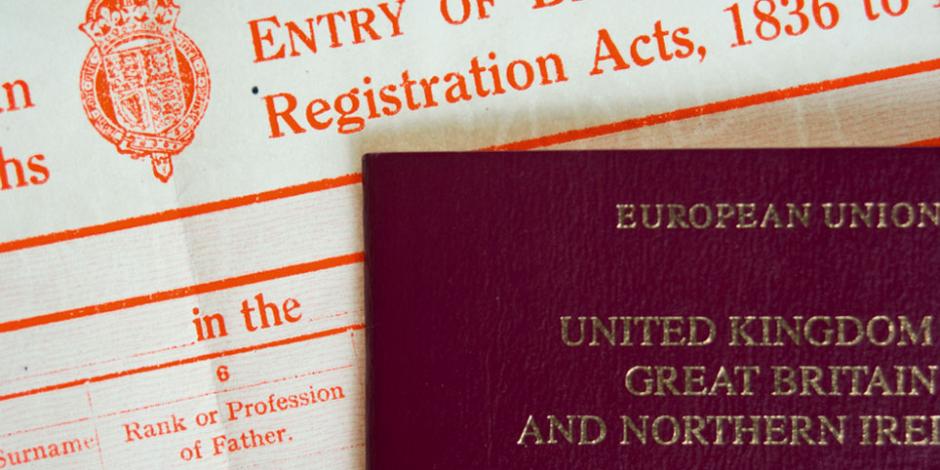About 20 years ago, I had to prove my date and place of birth at a German registry officeStandesamtregistry office. I handed my birth certificate to the registrarStandesbeamter/-beamtinregistrar. He inspected it carefully and raised his eyes to look at me equally carefully. “This certificate is very old,” he said slowly and suspiciouslymisstrauisch, argwöhnischsuspiciously. “Well, yes, 45 years old. That’s how old I am,” I replied, somewhat perplexed. “It was to issue sth.etw. ausstellenissued at my birth,” I added helpfully.
This didn’t seem to reduce his obvious reservationVorbehaltreservations about the validityGültigkeit, Echtheitvalidity of my birth certificate. So, I continued by explaining that it was all that I could to produce sth.hier: etw. vorlegenproduce and pointed to the clear signs of its authenticity. The official took a deep breath and said, “Well, I suppose I can accept it. After all, the United Kingdom is not…,” naming a small country on a distant continent, about which he apparentlyanscheinendapparently had considerably more reservations than my birth certificate.
From general to personal
In his mind, the UK was associated with qualities such as honesty, adherenceEinhaltungadherence to the rule of law and due processrechtsstaatliche(s) Verfahrendue process. The judgement resulting from this picture was applied to me personally as a citizen of that country and as a member of that group.
In the view of the official, the correctness of his assessmentEinschätzungassessment was to reinforce sth.etw. verstärken, untermauernreinforced by his comparison of my non-membership of a group with which he did not associate the same reassuringberuhigendreassuring and positive qualities.
His remark was not simply the expression of prejudiceVorurteilprejudice or stereotypes, but evidenceNachweis(e), Beleg(e)evidence of how he had used the stereotypes to come to a decision about the acceptability of my birth certificate. It was also evidence of how powerful stereotypes can be.
We may prefer to use expert, factual knowledge to make considered decisions. But in “the great bloomingblühendblooming, buzzingsummend; hier: geschäftigbuzzing confusion of the outer world” — as US writer Walter Lippmann memorablyeinprägsammemorably called it — when practicality and speed are important, we also use, for better or worsehier: mit allen Vor- und Nachteilenfor better or worse, heuristic techniques. Stereotyping of the kind described here is one such technique.
A dangerous tool
That particular application of a stereotype is one of the reasons why, as Nobel Prize winner Daniel Kahneman pithilyprägnantpithily wrote in his book Thinking, Fast and Slow, “(s)tereotyping is a bad word in our culture”. And rightly so. Attributing qualities that are rightly or wrongly thought to be characteristic of a group to an individual person or case, with all the negative (or for me, in my example, positive) but possibly unjustified consequences is clearly not a good thing.
If the qualities making up the stereotype that are applied to the individual are positive but incorrect, this can lead to unjustified advantages for the individual. If the opposite is the case — the qualities are negative and incorrect — this can lead to the discriminatory views and behaviour that are typically regarded as the result of a stereotype.
But stereotypes are like knives. It’s their particular nature, the use to which they are put, as well as the people who use them that make them dangerous.
A helpful role for stereotypes
Stereotypes can be seen simply as bundleBündel; hier: Sammlung, Zusammenfassungbundles of qualities, not necessarily negative qualities, typically associated with a group, often a country or minority. And the way they are used, and especially their nature, can vary considerably. They are potentially harmful if, as we have seen, the qualities attributed to the group are applied to the individual, are evaluativewertendevaluative or are incorrect. Very often, sadly, all three of these conditions may applyhier: zutreffenapply.
Stereotypes can be helpful, however, in intercultural interaction as long as the user is aware that they are qualities describing a group and not every individual in the group, as long as the stereotypes are descriptive and not evaluative, and as long as the stereotypes are not so oversimplified or out-of-date as to be incorrect. The users must also be aware that they are using a stereotype.
These, of course, are all very big ask (ifml.)Anforderungasks. But if these conditions apply, then stereotypes can be helpful. They can be seen as “energy-saving devicehier: Mitteldevices”, as psychologist C. Neil McCrae and colleagues call them — or one of the tools for managing the complexity of intercultural interaction, as I put it.
But as with all tools, especially knives, they need to be handled very carefully.
Stereotypes
In his book Public Opinion, published in 1922, the American writer Walter Lippmann
first borrowed the term “stereotype” from the world of printing as a metaphor to describe “a picture of a possible world”. Lippmann pointed to the power of stereotypes in a much to quote sth.etw. zitierenquoted passage: “(w)e are told about the world before we see it. We imagine most things before we experience them. And those preconceptionvorgefasste Meinungpreconceptions, unless education has made us acutelyhier: sehracutely aware, to govern sth.hier: etw. steuern, bestimmengovern deeply the whole process of perceptionWahrnehmungperception.”
Neugierig auf mehr?
Dann nutzen Sie die Möglichkeit und stellen Sie sich Ihr optimales Abo ganz nach Ihren Wünschen zusammen.



